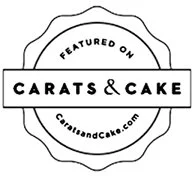Wedding Dress Codes Explained
/You've been invited to a wedding. How exciting! Now, the invitation arrives and it has a dress code on it, but you don't know what it means... I'm here to help! There are a few general wedding dress code roles that apply to all dress codes, but each dress code's unique wording indicates a specific attire so read your invitation carefully.
Later = More Formal - Always consider the time of day that the wedding is taking place. Generally speaking, the later in the day the wedding happens, the more formal the wedding is. Weddings that occur after 6 pm are considered innately more formal than weddings before 6 pm, even if the invitation does not specify an overly formal dress code. Traditionally, a black-tie wedding couldn't start before 6 pm. Today, it's considered acceptable for a black-tie wedding to start at 5 pm, and some push that to 4 pm, but it's pretty safe to say anything earlier than that is not black tie.
Never Outshine the Couple - Bottom line, if you take a photo with the couple, you should look like you're at the same party. You should not be more or less dressed up than they are. What you're wearing should never overshadow the bride, groom, or their parties.
Choose Colors Wisely - If you're attending a mid-summer beach wedding, brighter colors like fuchsia or lemon yellow are acceptable. If you're attending a 6 pm black-tie wedding, those same colors are not appropriate. In general, the more formal the event the more muted the colors. Jewel tones are about as flashy as formal events get with maroon, deep purple, or dark green being acceptable. Red is generally considered gauche, and white is never acceptable at a wedding unless specifically requested by the couple. The only exception to the white rule is a formal white button-up shirt.
Dress Codes
White Tie - White Tie is the most formal option. Think Met Gala or White House state dinners. Women should wear a formal floor-length evening gown, with no exceptions. Men are required to wear a tuxedo with tails.
Black Tie - The second most formal option, black tie is the most common of uber-dressy wedding attires. Indicating an evening event, black tie events indicate that women should wear a formal floor-length gown or a pantsuit, and in some cases a dressy non-floor-length gown is acceptable. Men must wear a tuxedo. A black bow tie, black vest or cummerbund, and patent leather shoes are also suggested. For summer weddings, a white dinner jacket and black tuxedo trousers are also acceptable.
Formal or Black Tie Optional - As indicated by the optional part of the name, a tux isn't required for black-tie-optional but the event is still formal enough for a tux to be appropriate. At a black-tie optional wedding, you can expect to see the groom in a tux but guests in both tuxes and suits. For women, a fancy cocktail dress, formal pantsuit, or floor-length gown are all acceptable.
Cocktail - Somewhere between semi-formal and formal, cocktail attire is the most popular wedding dress code for weddings across the country. For cocktail attire, men are required to wear a suit and tie and women should be in a dress that is above the floor, either tea-length, knee-length or a midi dress. In modern times, Mini-dresses have also been added to this list.
Semi-Formal - Semi-formal is to my thinking, one of the most hard-to-pinpoint styles. For women, an elegant pantsuit is appropriate as is a dress or a nice skirt and top. A floor-length gown would be considered inappropriate as it is far too formal for this type of event. Men can wear a suit if they like, but a dress shirt and dress pants are acceptable as well. Be cautious not to dress too casually as formal is still in the title.
Casual - A wedding with a casual dress code is still a wedding and as such jeans, shorts, and tank tops are not appropriate. Often outdoors, weddings with casual dress codes should take into account the weather and the setting of the wedding. A summer sundress would be a good choice, as would a skirt and a nice top. For men, khaki pants or dress pants with a shirt that has a color are appropriate. A sports jacket or tie is an acceptable addition, but by no means required. For both men and women, T-shirts and tennis shoes or sneakers are not acceptable.
Themed or Festive - These are two of the newest dress codes we've seen recently. Themed usually indicates asking guests to dress in the theme of the wedding such as all white, all black, Christmas, or come in a costume. Festive indicates that guests have free reign! Go for as bold of colors and patterns as you wish and let your individuality shine!
Come As You Are - We've seen this a few times on invites and it's probably the most confusing option for guests. While many couples genuinely mean that they do not care what guests wear, many couples also simply mean to indicate that they are ok with guests dressing both as formally or informally as they desire. When in doubt, it never hurts to be medium-dressed. A dress or pantsuit is ok for women, and a suit is always safe for guys. If you arrive and think you're overdressed, remove the jacket and you'll blend right in.
Where to indicate a dress code to your guests? Are you getting married yourself and wondering where to let guests know about a dress code? I think it's always safest to indicate the dress code directly on the invitation. That way guests have all the info they need to respond to your invite promptly. If you have a wedding website, you can also put that information on the website for guests to reference.












